Enterprise Data Loss Prevention Software
Advanced enterprise data loss prevention software that protects sensitive data through behavioral analytics, endpoint monitoring, and real-time threat detection to prevent data breaches and ensure regulatory compliance.
Trusted by 10,000+ organizations to improve productivity, security, compliance, and workforce analytics.



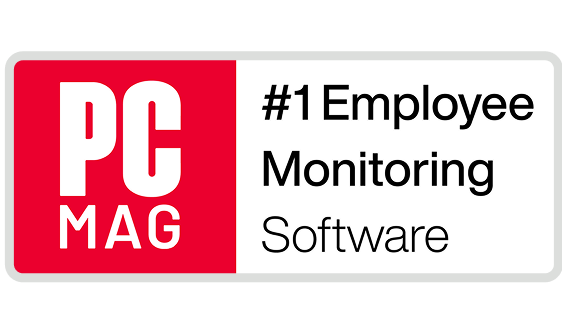
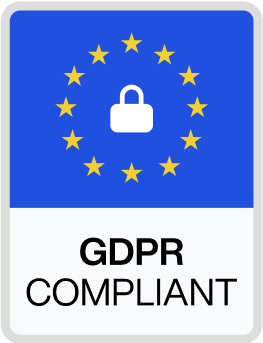
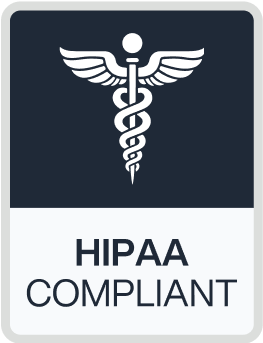

Why Enterprises Choose Teramind for DLP
Behavioral DLP That Reduces False Positives
Teramind uses behavioral analytics to understand context and user patterns. Unlike traditional DLP solutions that generate excessive false positives, we accurately detect real data threats to your sensitive information and intellectual property by analyzing how users normally interact with data.
Comprehensive Endpoint Data Protection
Monitor and protect sensitive data on all endpoints where users work. Our enterprise data loss prevention platform tracks data movements through applications, USB transfers, clipboard operations, and file activities – preventing data leaks before confidential data leaves your control.
Context-Aware Data Loss Prevention
Go beyond simple pattern matching with DLP that understands intent. By combining keystroke logging, application monitoring, and screen recordings, our software provides complete context for every data interaction, helping security teams make informed decisions about real threats .
Core Teramind Features for Enterprise Data Loss Prevention
Our DLP software combines behavioral analytics, endpoint monitoring, and comprehensive reporting to secure data across your enterprise.
Data Classification and Monitoring
Identify and track sensitive information across endpoints:
- Classify sensitive data including personally identifiable information, health data, and intellectual property
- Monitor how users interact with confidential data in real-time
- Track data identifiers across documents, applications, and communications
- Use OCR to identify sensitive information in screenshots and images
- Create custom classification rules specific to your enterprise data
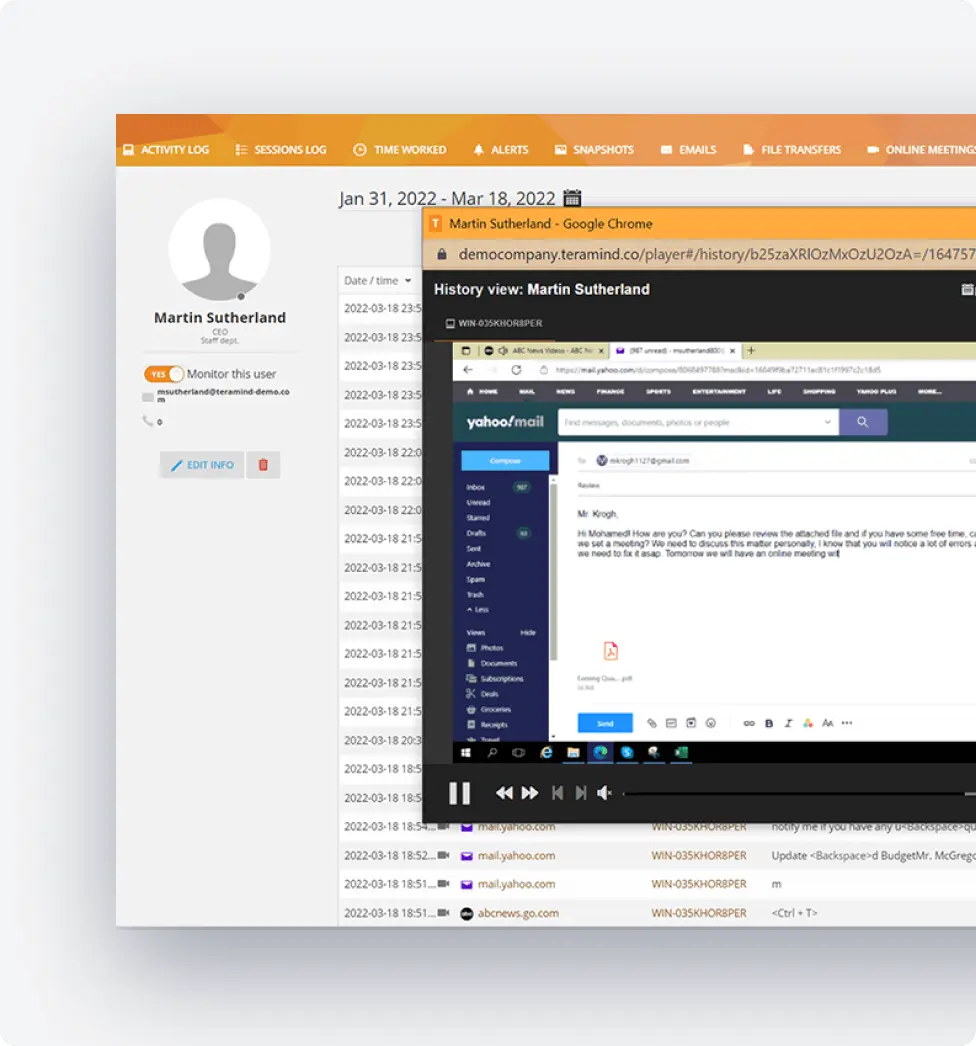
Advanced Endpoint DLP Protection
Endpoint DLP protects data where users work:
- Monitor data transfers to USB drives, external storage, and mobile devices
- Track copy/paste activities involving sensitive data across applications
- Block unauthorized data transfers based on content and user behavior
- Control printing of documents containing confidential information
- Prevent data theft through granular application-level controls
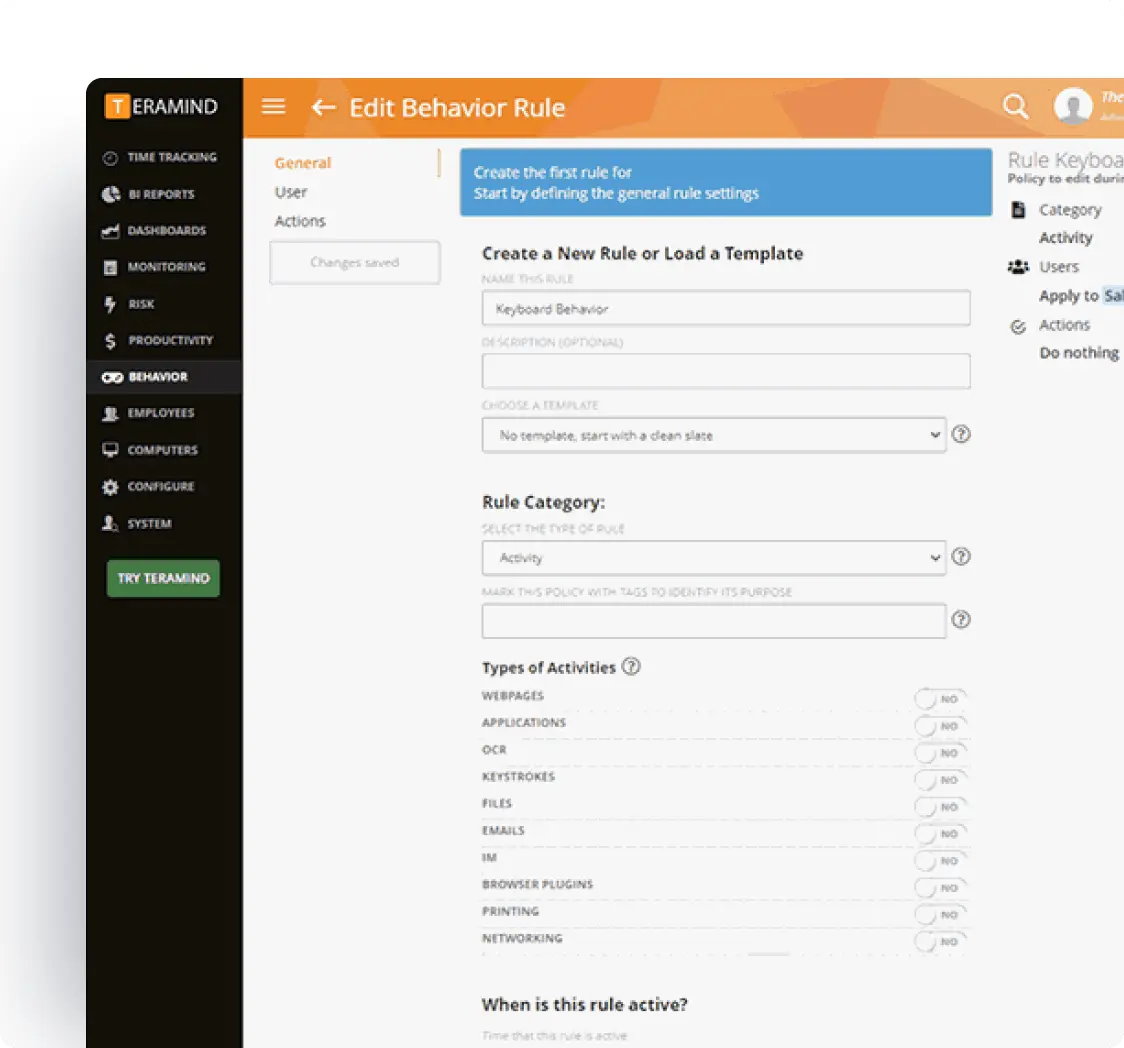
Behavioral Analytics and Insider Threat Detection
Address internal risks with intelligent monitoring:
- Detect insider threats through abnormal user behavior patterns
- Identify attempts to circumvent DLP policies using behavioral analysis
- Use machine learning to predict potential data loss scenarios
- Monitor for accidental exposure of sensitive information
- Create risk scores based on user activities and data access patterns
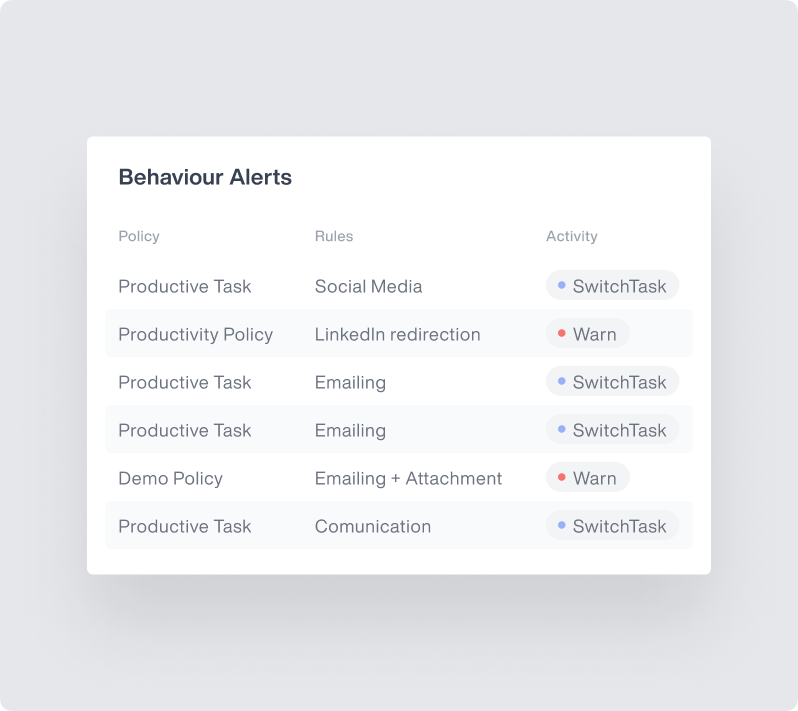
Real-Time Monitoring and Response
Stop data leaks as they happen:
- Get instant alerts when users attempt unauthorized data transfers
- Block data exfiltration attempts in real-time
- Monitor email attachments and web uploads for sensitive data
- Track file operations involving classified information
- Automate responses based on severity and context
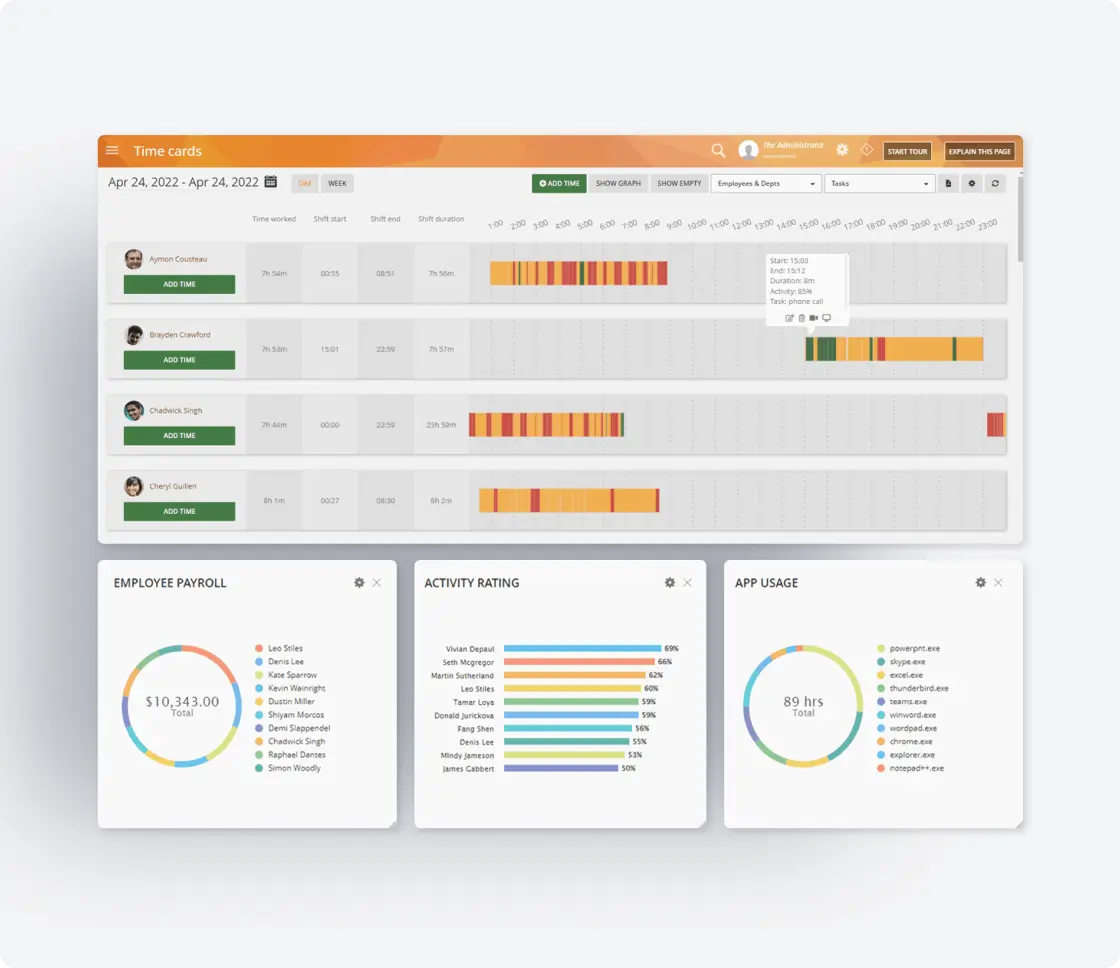
Forensic Evidence and Investigation Tools
Comprehensive capabilities for security teams:
- Access screen recordings showing exactly how data breaches occurred
- Review detailed activity logs with full context
- Track data lineage from source to attempted exfiltration point
- Generate forensic reports for investigations
- Provide irrefutable evidence for compliance audits
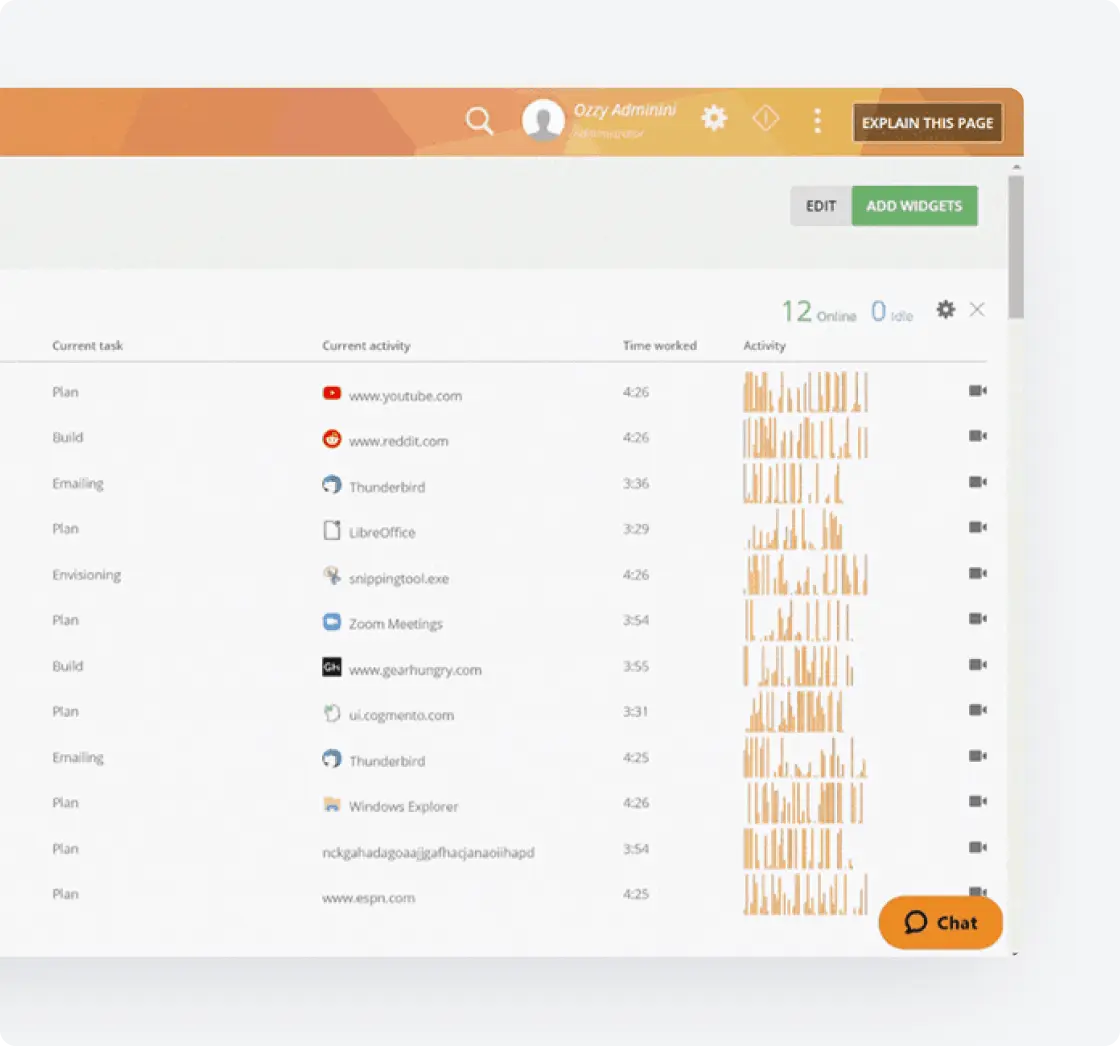
Compliance and Regulatory Support
Maintain regulatory compliance across frameworks:
- Meet regulatory requirements for GDPR, HIPAA, PCI-DSS protection
- Generate detailed reporting capabilities for compliance audits
- Create automated workflows for data protection policies
- Document all data handling activities for regulatory review
- Ensure consistent protection across your organization
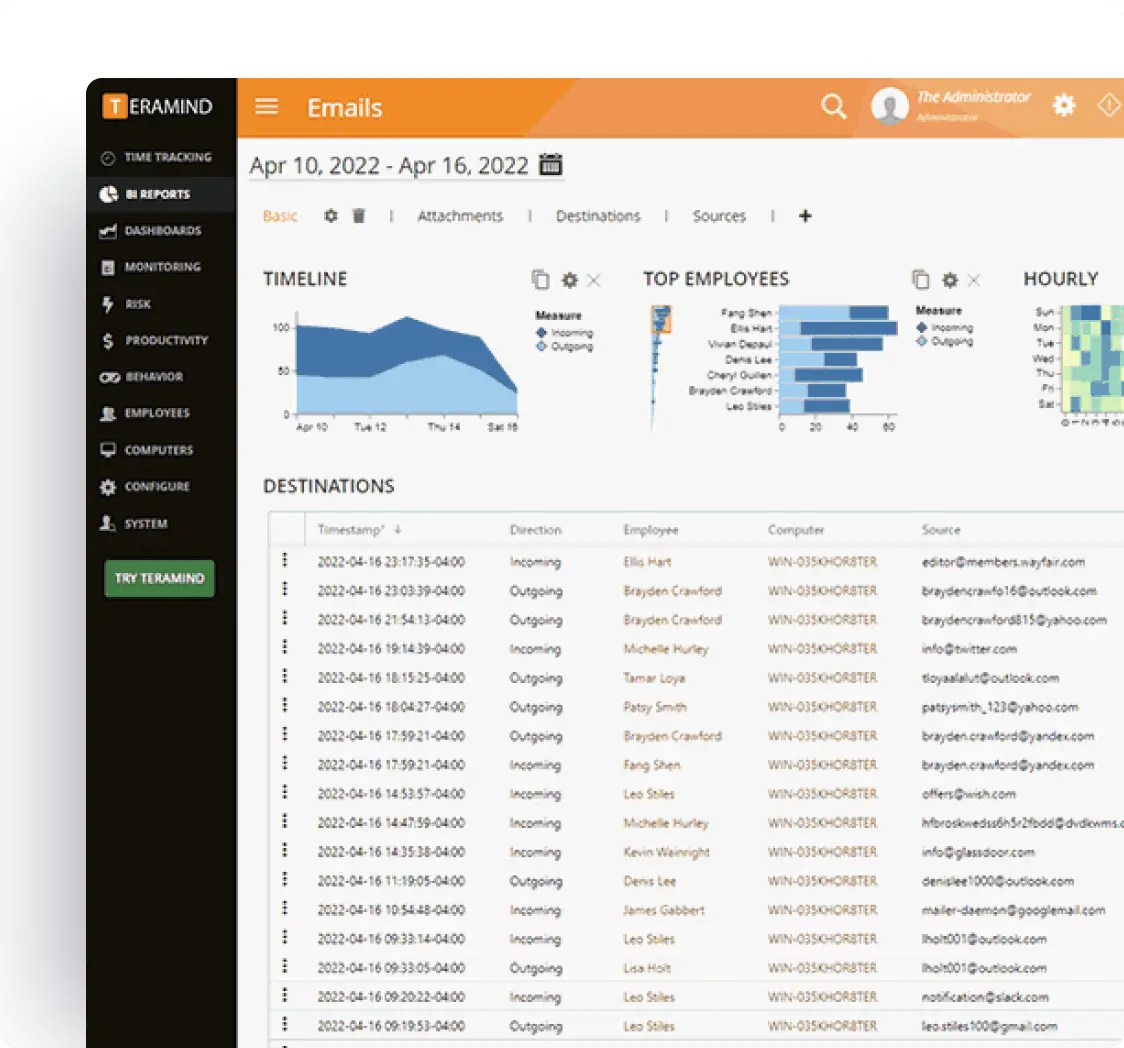
Enterprise Integrations
Integrate Teramind with your existing infrastructure to enhance DLP.
- Integrate with leading SIEM solutions like Splunk, ArcSight, and QRadar to centralize security event monitoring
- Connect with SOAR platforms to automate incident response for potential data privacy violations
- Leverage Common Event Format (CEF) for standardized security event reporting
- Enhance existing security tools with Teramind’s detailed user behavior analytics
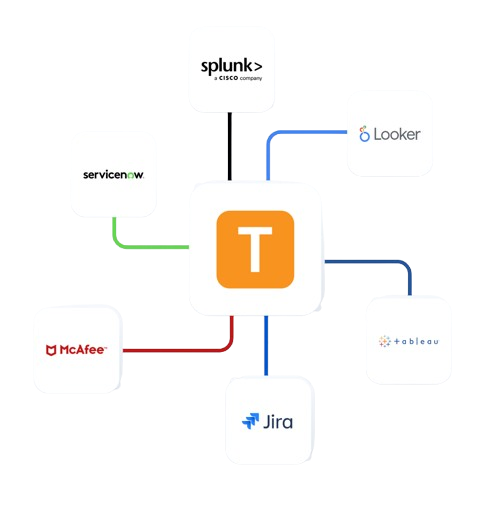
Teramind's Core Features
Leverage Teramind’s unparalleled power to solve your workforce challenges.
Live View & Historical Playback
Monitor employee screens in real-time or review past activity with historical playback to gain complete visibility into user activity and computer activity.
Optical Character Recognition
Teramind’s OCR functionality allows you to extract text from images and screenshots, enhancing your monitoring and analysis capabilities.
Website
Monitoring
Track employee time spent on websites, identify unproductive web browsing, and enforce company policies with comprehensive website monitoring.
Application
Monitoring
Monitor application usage, track time spent on specific apps, and identify potential security risks with detailed application monitoring on your endpoints.
Email
Monitoring
Monitor employee emails to prevent data leaks, ensure compliance with company policies, and protect sensitive information.
Instant Message Monitoring
Track instant messages and conversations to gain insights into team communication and collaboration, and ensure compliance.
Social Media Monitoring
Monitor social media activity to protect your brand reputation, prevent data leaks, and ensure employees adhere to company policies.
Network
Monitoring
Gain visibility into network activity, identify potential security threats, and optimize network performance with network monitoring.
Citrix
Monitoring
Monitor employee activity within Citrix environments, track application usage, and ensure data security with specialized Citrix monitoring on your devices.
Remote Desktop Control
Take control of remote employee computers in real-time to provide support, troubleshoot issues, or prevent data breaches and insider threats.
RDP Session Recording
Record RDP sessions to gain a comprehensive understanding of user activity, troubleshoot technical problems, and ensure compliance.
Productivity
Analysis
Analyze employee productivity with detailed metrics, identify areas for improvement, and boost productivity across your team members.
Active Vs. Idle
Time Logs
Track active and idle time to understand how employees spend their work hours and optimize time management and productivity.
Unproductive Work
Time Analysis
Identify unproductive work time, analyze patterns, and implement strategies to improve efficiency and time management.
Try a Live Demo
of Teramind
Interact with a live deployment of Teramind
to see how our platform works.
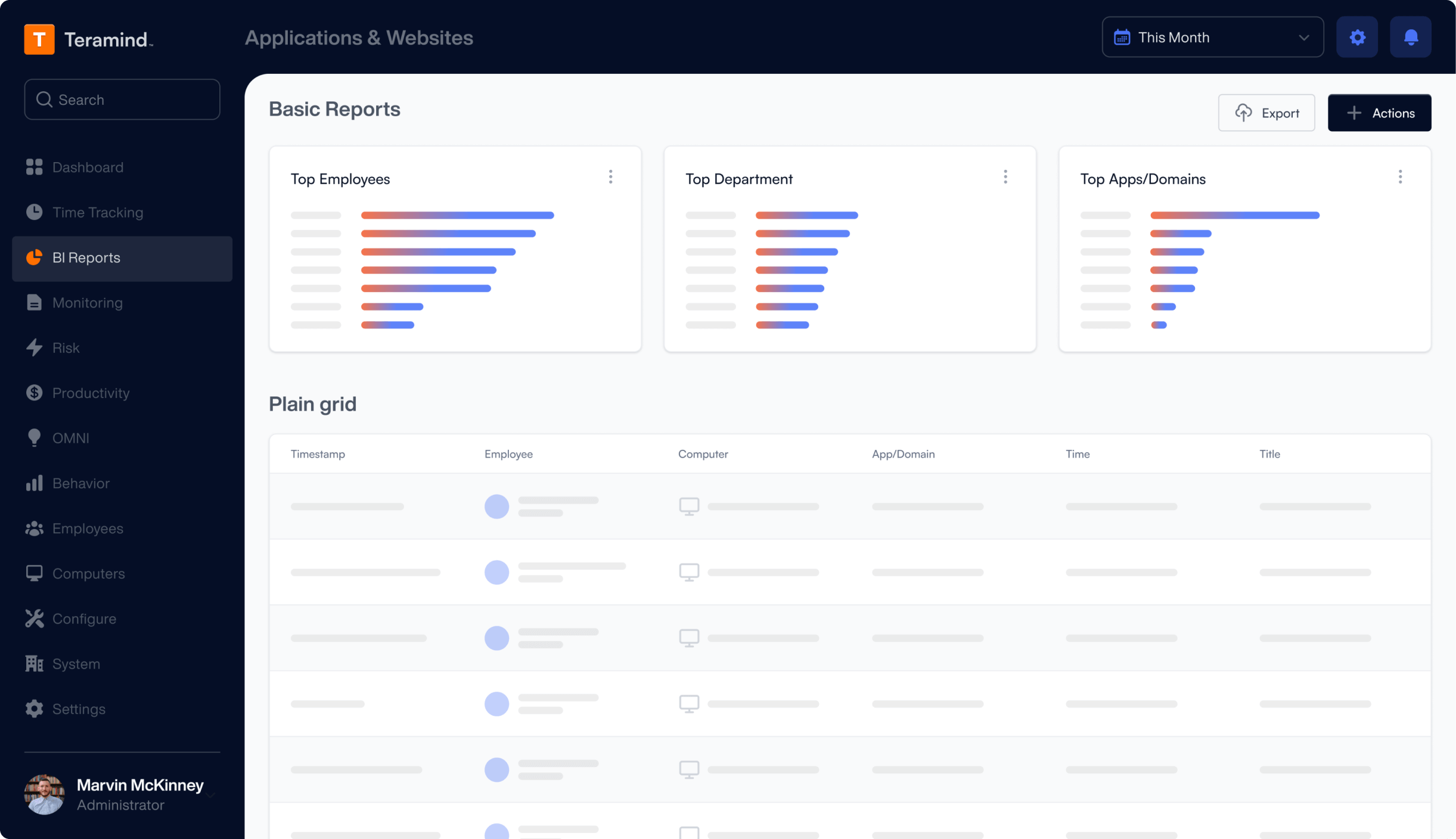
What our Customers Say
“The interface and reporting capabilities of Teramind remain unmatched compared to other products we have tried. Overall, Teramind is far more advanced than other competitors. They are definitely raising the bar and I’ll back them up any day.”
Ricky H.
Government Administration
“It’s been an amazing experience and a wonderful software that does exactly what you want! Security, control, peace of mind, the ability to know all that is going on in the organization. Very easy to use. It gives you real data! It has given us the protection that we need!”
Rene H.
Head IT Security
“This software has allowed us to save from a potential data breach and being able to catch people leaving who tried to take our IP. Very good software. A bit on the expensive side but worth every penny. Functionality is easy to get around. Has a great GUI.”
Milena L.
IT Manager
FAQs
What makes behavioral DLP more effective than traditional DLP solutions?
Traditional data loss prevention DLP relies primarily on pattern matching and static rules, often generating numerous false positives that overwhelm security teams. Behavioral DLP uses machine learning and user behavior analytics to understand context - learning normal data access patterns and identifying anomalies that indicate real threats. This approach dramatically reduces false positives while improving detection of sophisticated attacks, including insider threats that might bypass traditional DLP policies by using legitimate access rights inappropriately.
How does endpoint DLP protect against modern data threats?
Endpoint DLP protects data where it's most vulnerable - on user devices where people actually work with sensitive information. Modern data threats include insider risks, accidental exposure through personal devices, and sophisticated data exfiltration techniques. Endpoint-focused DLP monitors all data interactions including file transfers, application usage, clipboard activities, and printing. By understanding user behavior patterns and maintaining detailed logs, it can detect and prevent both malicious data theft and accidental data leaks.
What role does user education play in DLP implementation?
User education is crucial for successful enterprise data loss prevention. While DLP software can technically block unauthorized data transfers, the best protection comes from employees understanding why data security matters and how to handle sensitive data properly. Effective DLP implementation includes training users on data classification, acceptable use policies, and the risks of data breaches. When employees understand that DLP protects both company assets and their own personally identifiable information, they become partners in data protection rather than viewing it as surveillance.
How can organizations implement DLP without disrupting productivity?
Successful DLP implementation balances security with usability through phased deployment and intelligent policies. Start with monitoring mode to understand actual data flows and user behavior before enabling blocking. Use behavioral analytics to reduce false positives, implement role-based policies that match job requirements, and provide clear feedback when actions are blocked. Modern DLP solutions should adapt to legitimate business needs while preventing data risks. Regular review of DLP policies based on user feedback and security incidents helps maintain this balance over time.




